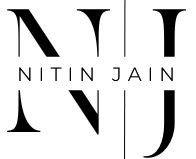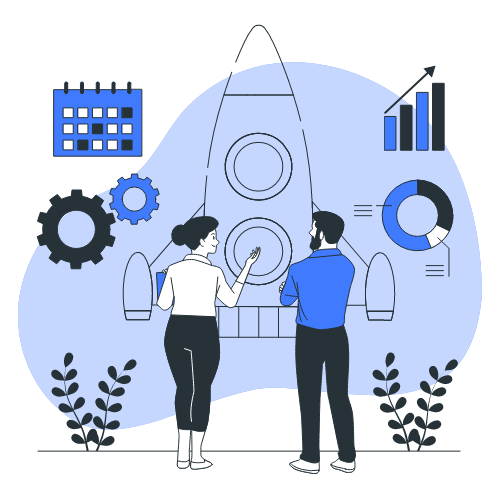Level-Up” Your Employees: Benefits of Gamified Employee Engagement
Overview of Gamification
Gamification is the use of game-like components in contexts outside of gaming. This can be used to get someone interested in something, make it more enjoyable, and inspire them to accomplish their objectives. The use of gaming components like points, awards, levels, and leaderboards to improve job performance is known as gamification in employee engagement. It can also be used to encourage cooperation and teamwork among workers.
Gamification is gaining popularity in the business world as a technique to engage staff members and inspire them to reach their objectives. Businesses are looking for ways to foster an environment that fosters cooperation and innovation while also increasing productivity and employee engagement. Companies can foster a competitive environment that motivates employees to strive for higher success by utilizing game components like awards, badges, and leaderboards.
Gamification provides other advantages in addition to raising employee engagement. It can boost morale, decrease workplace stress, and give a sense of accomplishment. Additionally, it can promote teamwork and foster trust between managers and workers. It can also encourage creativity and innovation.
Employers can inspire their workforce by offering concrete prizes and recognition by utilizing gamification in employee engagement, which can increase productivity. Employers may improve employee satisfaction, create a strong corporate culture, and enhance their standing in the industry by creating a pleasant and exciting work environment.
1. Gamification’s advantages for employee engagement
Gamification, which is used to engage people in non-game environments, involves the use of game elements and game-design approaches. This idea has several benefits when it comes to employee engagement. Employers can inspire and reward staff members, promote teamwork, and foster healthy competition among coworkers by integrating game elements into the workplace.
Increased productivity is one of the key advantages of gamifying employee engagement. It is possible to motivate employees to increase their productivity and make progress toward their goals by integrating game aspects into the workplace. Employees may also be motivated to go above and beyond expectations through competition and prizes. Additionally, because gamification enables workers to rise in prestige and respect inside their firm, it can boost job happiness.
Increased learning is a benefit of gamifying employee engagement. Employees can acquire useful skills that will help them advance in their careers through gamified activities and tasks. Employees can practice and improve their abilities in a fun setting by using game-based challenges. Employees can participate in training simulations with little to no risk in order to earn experience.
Gamification may encourage collaboration and teamwork as well. Different teams might be forced to work together and pool resources through the design of tasks. This motivates team members to develop strong relationships and cooperate to accomplish shared objectives. Additionally, it promotes friendly competition, which is excellent for morale.
Finally, gamification can promote employee engagement and loyalty. Organizations can instill a sense of pride in their businesses and worth in their employees by using games. Employee engagement and involvement over the long term are influenced by this sense of belonging.
2. Typical Characteristics of Gamified Workplace Engagement Systems
Gamification is a fantastic tool for involving staff members and inspiring them to achieve their objectives. Gamification is growing in acceptance in the business world, and the underlying technology is always being improved. The majority of gamified employee engagement systems share a few characteristics.
First, there are leaderboards that display the best-performing personnel. This is a terrific approach to monitoring how people or teams are doing inside an organization. Leaderboards also motivate everyone to strive for excellence by fostering a sense of rivalry among the participants.
Second, each employee’s accomplishments are acknowledged through the use of badges and rewards. The badges might be as simple as those that reward hard work or as complicated as those that recognize greater levels of performance. Awards are typically presented for exceptional accomplishments, such as meeting or exceeding a predetermined target or finishing a challenging job on schedule.
Third, there are incentives and rewards. From monetary bonuses to gift cards, rewards can take many different forms. Employee engagement in beneficial activities for the company, including taking part in team-building exercises or going to educational seminars, is frequently encouraged with incentives.
Missions and challenges round out the list. These are intended to put employees’ knowledge to the test and aid in their learning. They could involve finishing a certain assignment or competing with other teams inside the corporation.
It’s crucial to keep these elements in mind when creating your gamified employee engagement system. It will not only help to boost engagement, but it will also make it simpler for staff members to monitor their progress and maintain motivation.
3. creating a system for gamifying employee engagement
The objective should be to leverage game mechanics to boost staff engagement and motivation while developing a gamified employee engagement system. Digital systems that incorporate elements of competition, progress tracking, awards, and incentives can be developed to achieve this.
It’s crucial to take into account factors like the kinds of tasks or activities that will be tracked, the methods used to gauge performance or progress, and the potential rewards or incentives when developing a gamified system for employee engagement. The whole user experience should also be taken into account because it will have a significant impact on how successful the system is.
It’s crucial to provide users with clear objectives, constructive criticism, and an attainable goal in order to ensure user involvement with a gamified system. The system should also have tools for providing users with feedback on their performance and a way to track their development. In order to inspire users and provide incentives, awards and benefits should also be offered.
It’s crucial to include all stakeholders in the process in order to produce a successful gamified system. This applies to the management, staff, and other important participants. Each stakeholder should be aware of how they fit into the process and what they can do to help the system succeed. Before being implemented, the system should also be tested by stakeholders.
It’s crucial to keep the system’s goals and objectives in mind while creating a gamified employee engagement program. By doing this, you can make sure that the system is built to maximize employee engagement and motivation. Additionally, rather than concentrating solely on the rewards and incentives, it’s crucial to concentrate on establishing a positive user experience.
4. Configuring Your System
It’s time to put your plans into action once you have a clear understanding of the advantages and features of gamified employee engagement systems and a game plan for setting up your system. For your gamification system to be successful and interesting, it is essential to set it up properly.
Identifying the precise goals and objectives you want to accomplish with your system is the first step. This will make it possible for you to create a system that supports and aligns with these goals. Determine the resources that will be needed to set up and maintain the system, including money and manpower.
The platform you’ll utilize must then be chosen. A range of platforms are available, from well-liked gaming technology to unique applications. To select the platform that best meets your objectives, you must take into account elements like the target audience and the sort of data you wish to collect.
Additionally, you must choose the rules and guidelines that will be applied to your system. This includes determining which accomplishments will result in incentives, how prizes will be given out, and the standards or prerequisites for success. This will make it easier to make sure the system runs fairly and without any unintended consequences.
The last step is to create a method for monitoring progress. Monitoring progress not only helps you spot areas for development but also guarantees that the system functions properly. You can utilize technology like leaderboards and analytics tools to examine user data and assist you in making defensible decisions regarding your system.
Your system setup involves thoughtful preparation and execution. Even though it may take some time, a successful gamified employee engagement solution is well worth the effort. Once everything is set up, you can begin taking advantage of a productive gamification system.
6. Norms and Guidelines for Effective Gamification
To ensure the efficacy of your gamified employee engagement system, it’s crucial to incorporate some rules and guidelines. The gamified systems that are most effective in motivating employees to participate also have clear rules, regulations, and rewards in place.
To begin with, construct a set of guidelines that everyone must follow in order to take part in the events. This will make sure that everyone is aware of the standards and requirements for success. It ought to include any penalties for breaking the regulations as well.
Create a system of incentives and rewards that motivates staff to engage in gamified activities next. These could take the form of gifts, points, badges, or any other kind of incentive that acknowledges employees’ achievements and motivates them to use the system in the future.
Additionally, think about organizing contests to boost staff engagement. These could be duties that require completion by staff members in order to earn incentives or recognition. Additionally, competitions can be utilized to encourage healthy competition among staff members and inspire them to become more invested in the system.
Finally, monitoring and evaluating progress is crucial for successfully optimizing the system. Metrics and KPIs should be set up to give you information about how well people are doing and where they can be improved. You’ll be able to adjust the system to better serve your employees’ needs and realize its full potential by monitoring progress.
7. Organizing contests
Gamification may be a fantastic strategy to use when it comes to increasing employee engagement. Making tournaments is one of the most interesting uses of gamification. This can be accomplished in a variety of ways and significantly boost employee engagement.
Contests are a fantastic way to encourage your staff to produce their finest work. You can make competitions as easy or as difficult as you like. Contests might be held to see who can finish the most work in the shortest amount of time, make the most sales in the shortest amount of time, or even get the most favorable customer comments.
No matter what kind of competition you choose, be sure to provide precise guidelines and criteria for how it will be scored and evaluated. Additionally, make sure you provide the winners with a reward in the form of a prize. This can take the form of a bonus, corporate merchandise, or gift cards.
When you’ve finished creating your competition, make sure to spread the word about it inside your company. Inform your team members of the contest and the requirements for winning. Additionally, you can urge them to tell their coworkers about it, which can boost participation and interest.
Competitions are excellent for motivating your staff, but be careful to consider every aspect before you implement one. It will be successful if the competition is well-structured and has a clear understanding of how it will be evaluated and rewarded.
7. Making Reward and Incentive Programs
Any effective gamification system must have incentives and rewards. If there is a reward or incentive associated with anything, people are more inclined to interact with it, and this can be particularly significant for employee engagement.
It’s crucial to keep your objectives in mind when creating prizes and incentives. Increasing production, job satisfaction, or information exchange are examples of this. After deciding on your target results, you can begin to design rewards that motivate users to work toward them.
Digital badges, trophies, or titles like “Employee of the Week” or “Top Contributor” could be used as rewards. Additionally, they don’t have to be pricey; commonplace items like a gift card, additional time off, or a letter of appreciation can be just as powerful.
In a gamified system, incentives are also crucial and can be utilized to motivate players to put in more effort or play longer. These can include savings on goods or services as well as technology like laptops, tablets, and even cars.
Finally, remember to rotate your incentives and prizes. Users will have something fresh to strive for as a result, which will make playing the game more intriguing. Non-cash incentives like VIP access or admission to special events can also work wonders as motivators.
The advantages of including incentives and rewards in your gamification system might be huge. Motivated workers can increase output, improve morale, and improve team dynamics. Rewards and incentives may be a useful element in any employee engagement strategy with a little thought and preparation.
8. Growing User Engagement with Gamified Systems
Gamification is a powerful tool for increasing user participation and engagement in your system. By making the process enjoyable and rewarding, you can persuade people to actively engage with the system. In order to boost user engagement with your gamified system, take into account the following advice:
Set Clearly Attainable Goals: Users are more likely to work toward success when their goals are clearly defined and attainable. All levels of users should be able to achieve the goals, and completion of the goals should result in rewards or acknowledgment.
Structure the system to make goal progress apparent: It’s critical to make goal progress apparent so users can quickly gauge their progress toward reaching their goals. This is best illustrated using visual tools like progress bars and point systems. Seeing tangible results encourages players to keep playing.
Promote Social Interaction: Social features like leaderboards, contests, and team-based challenges can encourage users to continue using the system. Additionally, these components encourage healthy competition among users, which can strengthen bonds of respect and cooperation.
Offer awards for good performance. Offering awards for excellent performance encourages users to perform to their highest potential. Rewards might come in the form of discounts, real-life prizes, or even virtual products. Instead of being decided by chance or luck, these rewards ought to be given out according to performance.
Keep It Fresh: Add new components, such as minigames, special occasions, or bonus points, to keep things interesting. This can entice consumers to return for more while averting boredom and attrition.
These techniques can help you boost user engagement with your gamified system. Gamification, when used effectively, has the potential to boost user engagement and improve the user experience.
9. Gamification for Progress and Performance Tracking
A fantastic technique to judge success is to track staff performance and growth through gamification. Additionally, it enables managers to individually tailor their strategies for each situation. It encourages employees to perform to their best capacity by giving them unique goals and rewards.
Today, many businesses incorporate tracking techniques into their systems for measuring employee engagement. A point system, for instance, can be used to monitor a worker’s advancement and accomplishments. Points can be earned for every activity done or challenge won and used to purchase rewards, unlock new levels, or take on new tasks.
Setting up leaderboards that rank employees in accordance with their performance is another well-liked strategy. People can compare their performances and receive praise for their accomplishments in this healthy competitive environment. Additionally, it enables managers to quickly recognize and reward their top workers.
The more conventional method of monitoring performance and progress using different metrics is the final option. This covers items like time sheets, attendance records, and assessments of employee satisfaction, among other things. Even though they are still crucial, it might be challenging to inspire large crowds of people using just these techniques. Because of this, a lot of businesses are adding gamified systems to these more conventional approaches to boost employee engagement and productivity.
10. Making modifications to improve results
Results from gamification in employee engagement can differ from person to person. It’s crucial to modify your system as necessary and implement modifications that enable you to achieve greater outcomes. You can improve your systems in the following ways for improved outcomes:
Study the statistics. Employee performance ought to be able to be recorded by your gamified system. Utilize this information to assess the effectiveness of the engagement system and identify any areas that might require improvement.
Include the workforce. Ask staff members for their opinions and ideas on how the system might be improved. Their knowledge of the system may also enable you to pinpoint problems or make improvements.
Increase incentives. Think about adjusting the types and dollar amounts of rewards you provide. Employee engagement and motivation can be maintained in this way.
Funnel it out. Making work more enjoyable and rewarding is the whole point of gamification, so check that your system effectively involves employees and is enjoyable!
You may improve the efficiency of your gamified system and staff engagement by making adjustments to optimize your outcomes. Track the modifications you make to determine which ones have the biggest effects.
Gamification should be used by businesses to maximize their aims and objectives as well as employee satisfaction. Gamification can assist in fostering an atmosphere where everyone is working toward the same objectives by establishing competitions, offering rewards, and monitoring progress.
Gamification may initially appear to be a difficult task, but the benefits are well worth the effort. To achieve the best outcomes, businesses should take the time to learn how to integrate gamification into their employee engagement programs. Companies can create a fun and inspiring workplace that promotes collaboration and creativity with the correct support and direction.
Questions and Answers Regarding Gamification in Employee Engagement
What does gamification mean?
Gamification is the application of game design principles and gaming dynamics to non-game environments in order to engage users, spur action, advance learning, and address issues.
What are the advantages of gamification for increasing employee engagement?
Gamification has been shown to promote goal achievement, boost employee engagement, and foster the skills necessary to create productive and energizing workplaces.
What characteristics do gamified employee engagement systems share in common?
Leaderboards, prizes, levels, badges, and points are typical gamified system components.
How do you create a gamified employee engagement solution that works well?
It’s crucial to concentrate on developing goals, rules, objectives, and rewards that will interest and encourage workers while constructing a gamified system. Additionally, it’s critical to consider the organization’s and its personnel’s pertinent strengths and shortcomings.
What procedures should be followed while establishing a gamified employee engagement system?
Prior to implementing the system, it’s critical to establish objectives, make rules and regulations, and set up incentives and rewards for workers.
How can user engagement in a gamified environment be improved?
Increasing competition, offering material rewards, responding to user feedback, and interacting with people on social media can all help increase user participation.
How might gamification be used to track performance and progress?
A: Setting up leaderboards and other indicators will make it simple to monitor progress and performance. Additionally, keeping track of progress and performance aids in decision-making regarding which procedures and tactics require ongoing improvement or modification.
Author Profile
- Nitin JainArticles by Nitin Jain
- Nitin Jain is the founder and C.E.O of India PR Distribution - India's top Press Release Distribution and PR Agency. Nitin has more than 20 years of experience in PR, Corporate Communications, Digital Marketing, Branding Strategy and Lead generation.
Latest entries
 Press Release TipsAugust 2, 2023How to Upcycle Content: Creative Ways To Get More Value From your content in 2023
Press Release TipsAugust 2, 2023How to Upcycle Content: Creative Ways To Get More Value From your content in 2023 Digital MarketingAugust 2, 2023Unlock Your Content Potential: A Guide to Repurposing
Digital MarketingAugust 2, 2023Unlock Your Content Potential: A Guide to Repurposing Press releaseAugust 2, 2023Unlock the Benefits of Repurposing: What is Content Repurposing & Does It Work?
Press releaseAugust 2, 2023Unlock the Benefits of Repurposing: What is Content Repurposing & Does It Work? Search OptimizationAugust 2, 2023Leverage Voice Search For Local Biz Success: Tips & Strategies
Search OptimizationAugust 2, 2023Leverage Voice Search For Local Biz Success: Tips & Strategies

